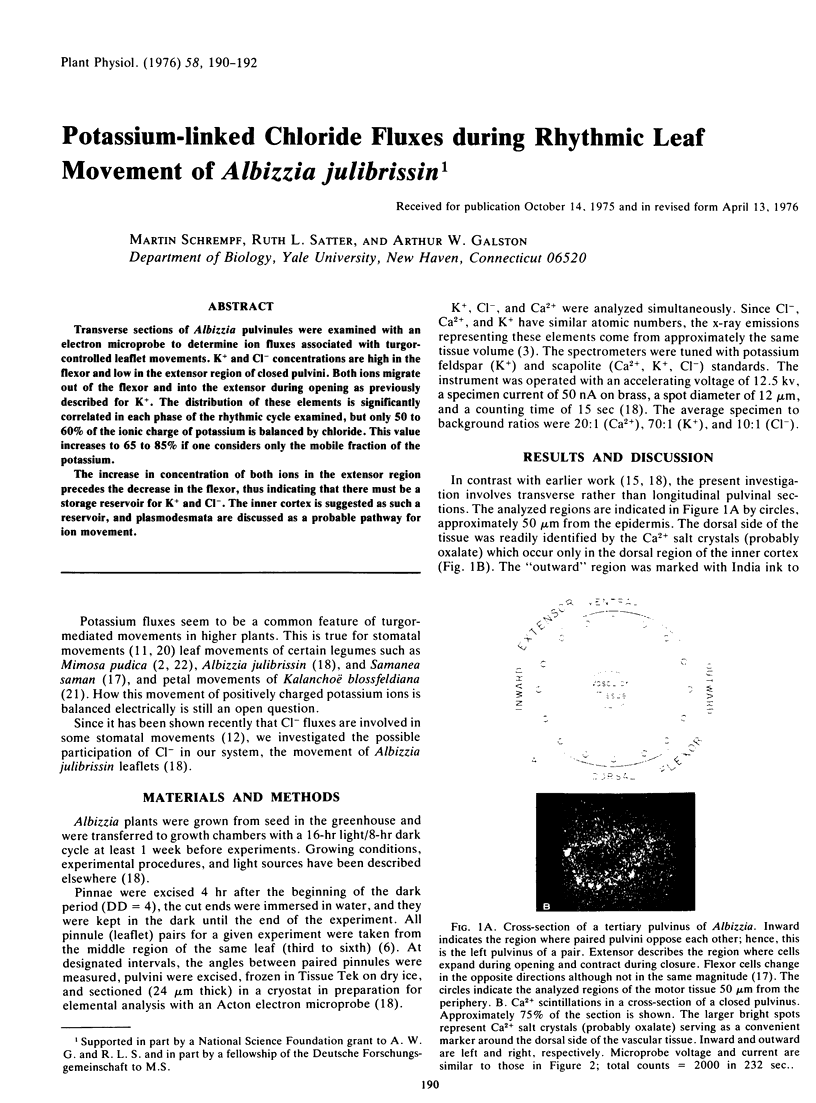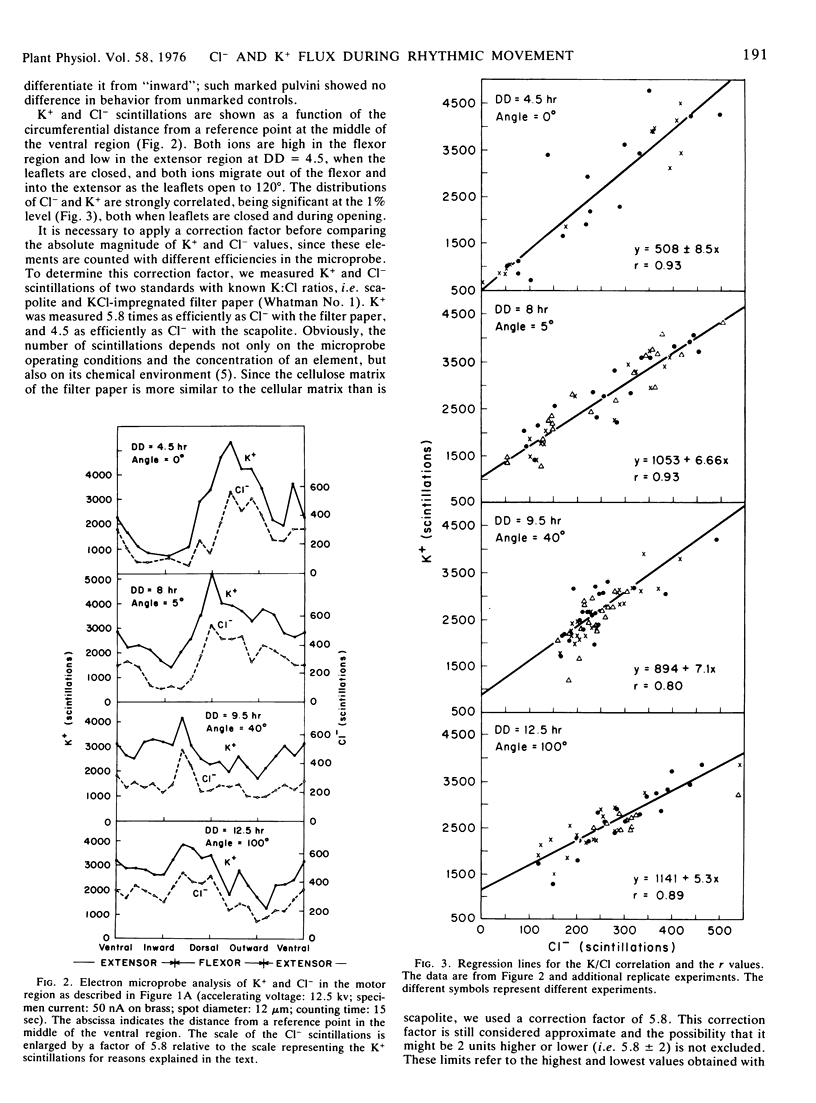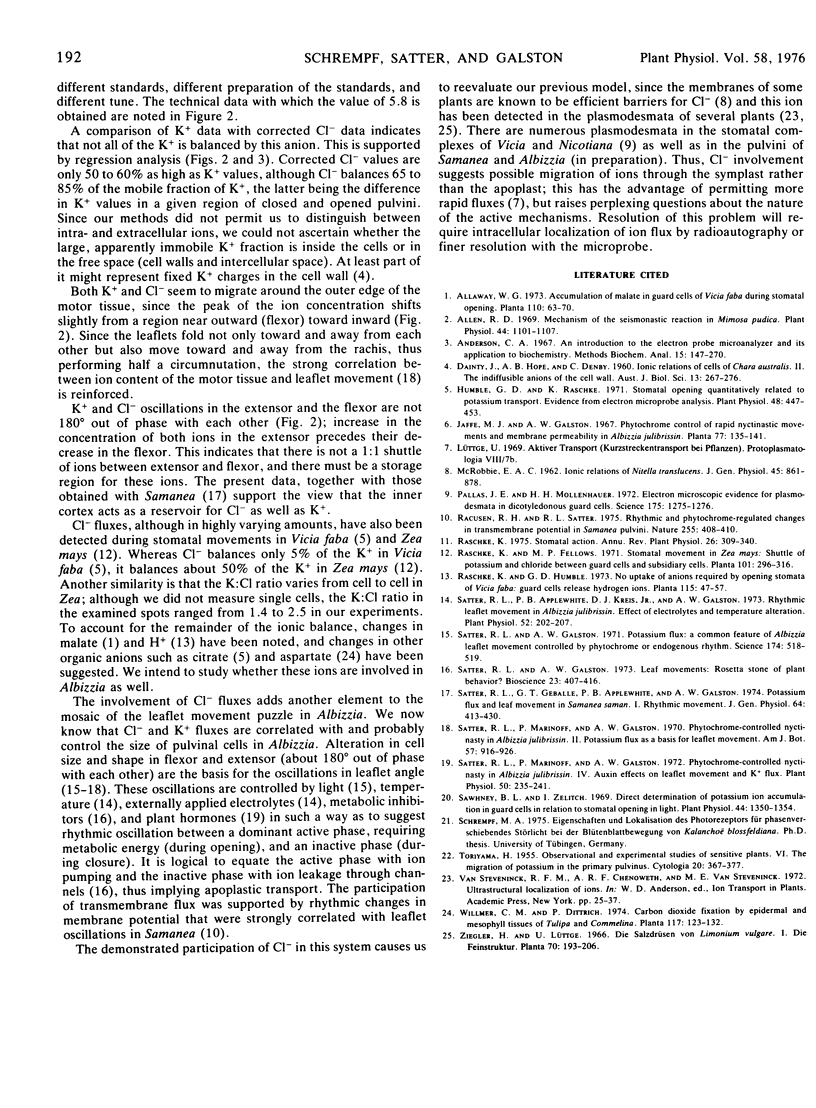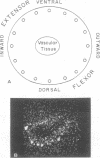Abstract
Transverse sections of Albizzia pulvinules were examined with an electron microprobe to determine ion fluxes associated with turgorcontrolled leaflet movements. K+ and Cl− concentrations are high in the flexor and low in the extensor region of closed pulvini. Both ions migrate out of the flexor and into the extensor during opening as previously described for K+. The distribution of these elements is significantly correlated in each phase of the rhythmic cycle examined, but only 50 to 60% of the ionic charge of potassium is balanced by chloride. This value increases to 65 to 85% if one considers only the mobile fraction of the potassium.
The increase in concentration of both ions in the extensor region precedes the decrease in the flexor, thus indicating that there must be a storage reservoir for K+ and Cl−. The inner cortex is suggested as such a reservoir, and plasmodesmata are discussed as a probable pathway for ion movement.
Full text
PDF


Images in this article
Selected References
These references are in PubMed. This may not be the complete list of references from this article.
- Allen R. D. Mechanism of the Seismonastic Reaction in Mimosa pudica. Plant Physiol. 1969 Aug;44(8):1101–1107. doi: 10.1104/pp.44.8.1101. [DOI] [PMC free article] [PubMed] [Google Scholar]
- Andersen C. A. An introduction to the electron probe microanalyzer and its application to biochemistry. Methods Biochem Anal. 1967;15:147–270. doi: 10.1002/9780470110331.ch4. [DOI] [PubMed] [Google Scholar]
- Humble G. D., Raschke K. Stomatal opening quantitatively related to potassium transport: evidence from electron probe analysis. Plant Physiol. 1971 Oct;48(4):447–453. doi: 10.1104/pp.48.4.447. [DOI] [PMC free article] [PubMed] [Google Scholar]
- Pallas J. E., Jr, Mollenhauer H. H. Electron microscopic evidence for plasmodesmata in dicotyledonous guard cells. Science. 1972 Mar 17;175(4027):1275–1276. doi: 10.1126/science.175.4027.1275. [DOI] [PubMed] [Google Scholar]
- Racusen R., Satter R. L. Rhythmic and phytochrome-regulated changes in transmembrane potential in samanea pulvini. Nature. 1975 May 29;255(5507):408–410. doi: 10.1038/255408a0. [DOI] [PubMed] [Google Scholar]
- Satter R. L., Applewhite P. B., Kreis D. J., Galston A. W. Rhythmic Leaflet Movement in Albizzia julibrissin: Effect of Electrolytes and Temperature Alteration. Plant Physiol. 1973 Sep;52(3):202–207. doi: 10.1104/pp.52.3.202. [DOI] [PMC free article] [PubMed] [Google Scholar]
- Satter R. L., Galston A. W. Potassium flux: a common feature of albizzia leaflet movement controlled by phytochrome or endogenous rhythm. Science. 1971 Oct 29;174(4008):518–520. doi: 10.1126/science.174.4008.518. [DOI] [PubMed] [Google Scholar]
- Satter R. L., Geballe G. T., Applewhite P. B., Galston A. W. Potassium flux and leaf movement in Samanea saman. I. Rhythmic movement. J Gen Physiol. 1974 Oct;64(4):413–430. doi: 10.1085/jgp.64.4.413. [DOI] [PMC free article] [PubMed] [Google Scholar]
- Satter R. L., Marinoff P., Galston A. W. Phytochrome-controlled Nyctinasty in Albizzia julibrissin: IV. Auxin Effects on Leaflet Movement and K Flux. Plant Physiol. 1972 Aug;50(2):235–241. doi: 10.1104/pp.50.2.235. [DOI] [PMC free article] [PubMed] [Google Scholar]
- Sawhney B. L., Zelitch I. Direct determination of potassium ion accumulation in guard cells in relation to stomatal opening in light. Plant Physiol. 1969 Sep;44(9):1350–1354. doi: 10.1104/pp.44.9.1350. [DOI] [PMC free article] [PubMed] [Google Scholar]



